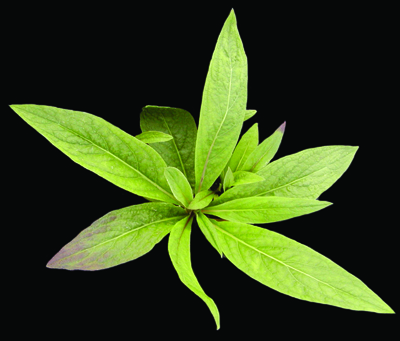Foxglove, a beautiful garden ornamental is actually one of the most dangerous plants one could think of. It is considered a Baneful Herb. Here is an excerpt from Witchipedia on its magickal properties.
" Foxglove is a baneful herb associated with the planets Saturn or Venus, depending on who you ask.
Juice or dew collected from foxgloves can be used in ritual to commune with the faeries and the leaves are said to help break faerie enchantments. Do not let it touch your skin and do not inhale the smoke if you burn the leaves!
Plant foxgloves anywhere you wish to invite the faeries to come visit.
Carry foxglove with you to attract faerie energy." [Source]
Foxglove was originally used to treat heart and kidney issues, and it technically still is! Medical technology is used today to isolate the compound Digoxin to be used as a cardiac medication! The plant itself is actually a potent cardiac toxin that is very dangerous. Several plants get mixed up with this plant when it is not in bloom, such as Comfrey, Elecampane, and Mullein. When dealing with plants for medicine, Always be sure you spend time with plants through every seasonal change so you can properly identify them without a shadow of doubt!
The young rosettes of all of these plants are very similar, and this is why it is so important to be with your plant through its flowering stage. It is imperative to note, many plants that grow in a basal rosette have a 2 year growth cycle. So, on year one, they will be a dormant basal rosette, and year two, they will grow their stalks and blooms. They are very easy to mix in this young stage, but once the flowers pop up its like-- “Oh yeah… definitely not what I thought you were.”
Here are some comparative photos of their rosettes and flowering stalks:
[Foxglove Digitalis purpurea] ![]() All members of the Digitalis Genus are toxic
All members of the Digitalis Genus are toxic
Rosette:
(Photo -Source)
Full Grown:
(Photo-Source)
[Comfrey Symphytum officinale] ![]() Comfrey is Skin Safe but not reccommended for internal use because of harmful Hepatotoxic PAs (Pyrrolizidine Alkaloids)
Comfrey is Skin Safe but not reccommended for internal use because of harmful Hepatotoxic PAs (Pyrrolizidine Alkaloids)
Rosette:
(Photo- Source)
Full Grown:
(Photo- Source)
[Mullein Verbascum thapsus]
Rosette:
(Photo- Source)
Full Grown:
(Photo- Source)
[Elecampane Inula brittanica L.]
Rosette:

(Photo- Source)
Full Grown:
(Photo- Source)
As you can see, these plants are all wildly different in full flower, but dangerously similar when young and dormant! My teacher in the video detailing the importance of correct identification told us just how dangerous this plant was with a personal story-- in which: One of her friends was out for a jog and saw a plant that she thought was one of the medicinals I outlined above, and took it home to put in her smoothie. She made the smoothie and drank it, and ended up needing to go to the hospital-- she died within two hours of consumption. This plant is violent; and it is best we all have the knowledge to protect ourselves from a similar fate.
Thank you for reading this long I know this was a doozy compared to the last one I wrote up! ![]()







 ) for their area and studying. Luckily there are schools that go over these topics, but not all do.
) for their area and studying. Luckily there are schools that go over these topics, but not all do.
 They planted it before I got home)
They planted it before I got home)





 I only thought of it because I had to double-check to see if Mullein was Lamb’s Ear- nope, turns out they are different plants!
I only thought of it because I had to double-check to see if Mullein was Lamb’s Ear- nope, turns out they are different plants! 